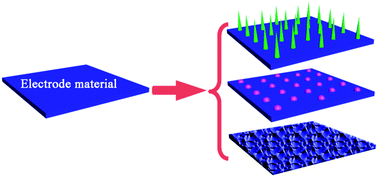Interface chemistry engineering in electrode systems for electrochemical energy storage
Abstract
Although high power electrochemical capacitors and high energy batteries have some differences in the charge storage mechanism, high-efficiency energy storage requires an excellent interface between the electronic-transporting phase (electrode) and the ionic-transporting phase (electrolyte). Considerable amounts of attention have been paid to the interface and the entire electrode system to solve all kinds of technological challenges for their development. We introduce two powerful strategies for a well-controlled interface (step-by-step nano-architectures grown on substrates and nanoscale building blocks with spatial precision). Then, some recent advances are focused on for the interface design of current collectors and highlight the interfacial bonding between electrochemically active materials and conductive substrates. Interface chemistry engineering in electrode systems for electrochemical energy storage needs to integrate individual materials components to interface design and optimization. Step-by-step growth provides robust contact between working materials and substrates. Nanoscale building blocks as solution-processable precursors are a potentially low cost alternative and are promising for bulk production. Flexible step-by-step assembly by combining interfacial self-assembly with nanoscale building blocks may be a powerful method for interface chemistry in electrochemical energy storage.


 Please wait while we load your content...
Please wait while we load your content...